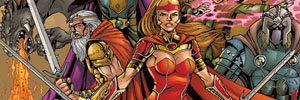Dining table step 1 Keeps With the Attachment Group
Emotionally Abusive Caregiving
Multiple look communities (e.g., Bifulco, Brown, Harris, 1994 ; Hart, Brassard, Binggeli, Davidson, 2002 ; Thompson Kaplan, 1996 ) enjoys understood numerous caregiver practices spanning mental discipline, nevertheless lack of consensus will make it hard to compare and you can generalize across look conclusions. Given that parental conclusion lays together good continuum, determining in which acceptable decisions gets mentally abusive is tricky and you will susceptible to ranged feedback ( Messman-Moore Coates, 2007 ; Wright, 2007 ). Connection concept and you can look may provide clues regarding how to identify psychologically abusive child-rearing and its own effects towards the people.
The fresh new connection literary works refers to insensitive, rejecting, and invasive and character-reversing parenting since the trick members in order to vulnerable accessory ( Ainsworth et al., 1978 ; van IJzendoorn, 1995 ). However, Collins and Feeney (2004 ) explained avoidant and you will ambivalent baby attachment models while the “suitable” ways to get adequate degrees of coverage and contact with individuals. On  the other hand, in the event theory and you will browse suggest that vulnerable connection produces a vulnerability to have psychopathology (look for Carlson Sroufe, 1995 , to own an assessment), of a lot vulnerable youngsters and you may adults do not demonstrated interpersonal or psychological issues, and avoidant or dismissing individuals have become listed showing an enthusiastic absence of troubles (e.grams., Riggs Jacobvitz, 2002 ). Furthermore, Solomon and you will George (1999 ) argued you to definitely reparative actions by caregivers (age.grams., hugs, apologies, explanations) adopting the negative child-rearing practices stop the deleterious negative effects of this type of connections.
the other hand, in the event theory and you will browse suggest that vulnerable connection produces a vulnerability to have psychopathology (look for Carlson Sroufe, 1995 , to own an assessment), of a lot vulnerable youngsters and you may adults do not demonstrated interpersonal or psychological issues, and avoidant or dismissing individuals have become listed showing an enthusiastic absence of troubles (e.grams., Riggs Jacobvitz, 2002 ). Furthermore, Solomon and you will George (1999 ) argued you to definitely reparative actions by caregivers (age.grams., hugs, apologies, explanations) adopting the negative child-rearing practices stop the deleterious negative effects of this type of connections.
Meta-analytic results mean parenting that is a bit inconsistent and you can notice-preoccupied or somewhat rejecting and you may dismissing try of the ambivalent and you may resistant otherwise avoidant infant choices, however sloppy attachment choices ( van IJzendoorn, 1995 ). Into the research tests where avoidant and you can ambivalent babies established good defined, albeit nonoptimal technique for obtaining and maintaining distance to caregivers, sloppy babies show disorientation, multiple means protection, freezing routines, or other unusual actions that don’t seem to have a good clearly identifiable mission or development ( Head Morgan, 1996 ; Fundamental Solomon, 1986 ). Head and Hesse (1990 ) theorized this particular disorganization comes up when caregivers display terrifying or scared habits, ergo to present kids on the irresolvable paradox of trying to search safety using their connection rates whenever threatened and you will frightened, and dreading the latest connection figure who is “the cause away from and you may choice to its security” (p. 163). Proof connecting sloppy child connection to help you bodily maltreatment and you will parental scared or frightening behavior aids it theory ( Carlson, Cicchetti, Barnett, Braunwald, 1989 ; Lyons-Ruth, Bronfman, Parsons, 1999 ; Lyons-Ruth, Connell, Grunebaum, Botein, 1990 ; Schuengel, Bakermans-Kranenburg, van IJzendoorn, 1999 ).
Whereas the fresh differentiation certainly real, intimate, and you can psychological abuse is pretty easy, it is more difficult to discriminate among imperfect parenting, adult problems, and you will psychologically abusive parental behavior ( Messman-Moore Coates, 2007 ; Wright, 2007 )
Lyons-Ruth and her colleagues (e.g., Lyons-Ruth, Alpern, Repacholi, 1993 ; Lyons-Ruth, Bronfman, Atwood, 1999 ; Lyons-Ruth, Easterbrooks, Cibelli, 1997 ; Lyons-Ruth, Melnick, Bronfman, Sherry, Llanas, 2004 ; Lyons-Ruth, Repacholi, McLeod, Silva, 1991 ) possess held a beneficial 20+-season longitudinal studies having a minimal-income attempt away from people and systematic parent–kid dyads, many proving dirty accessory habits. Building for the before work connecting parents’ terrifying and you may/or scared behaviors in order to child disorganization ( Lyons-Ruth, Bronfman, Parsons, 1999 ; Head Hesse, 1990 ; Schuengel mais aussi al., 1999 ), this study class recognized a couple of pages out-of tricky parenting which can be regarding the several subcategories off sloppy infant group. One to child-rearing character, named powerless-scared off accessory, are characterized by nonhostile and ostensibly receptive decisions with a high profile out-of parental withdrawal, fearfulness, and you may suppression. Helpless-afraid child-rearing is comparable to a dirty attachment trend called disorganized-secure otherwise unpleasant-method as infants nevertheless method their moms and dads and go actual get in touch with even after exhibiting disorganized habits. This development is relatively difficult to select and you will is apparently more widespread within the low-risk, middle-category samples. Next parenting reputation, titled hostile-self-referential from accessory, is described as excess role reverse, scary and you can negative and you may invasive choices, and decisions you to each other elicits and you may denies the fresh infant’s attachment-related ideas and you can routines. Of your own five first parenting balances coded, affective correspondence mistakes (elizabeth.grams., multiple contradictory indicators, nonresponse, or mismatched reaction) had been one particular relevant to baby disorganization. This inconsistent combination of both rejecting and interest-looking to behaviors because of the moms and dads was of this one minute sloppy trend inside the babies named sloppy-vulnerable or messy-avoid-fight since their disorganized behaviors had been mixed with almost every other behaviors like new avoidant and you will ambivalent or resistant groups. Even with obvious class differences in behavioral expression, evidence indicates that both subgroups away from disorganized children is located at risk for the very same bad effects, in addition to disagreement, worry, and dysphoria into the get togethers which have caregivers, also highly aggressive behavior that have colleagues of the age 5 and you may eight ( Lyons-Ruth, 1996 ; Lyons-Ruth mais aussi al., 1993 ; Lyons-Ruth mais aussi al., 1997 ).
Category: Uncategorized










